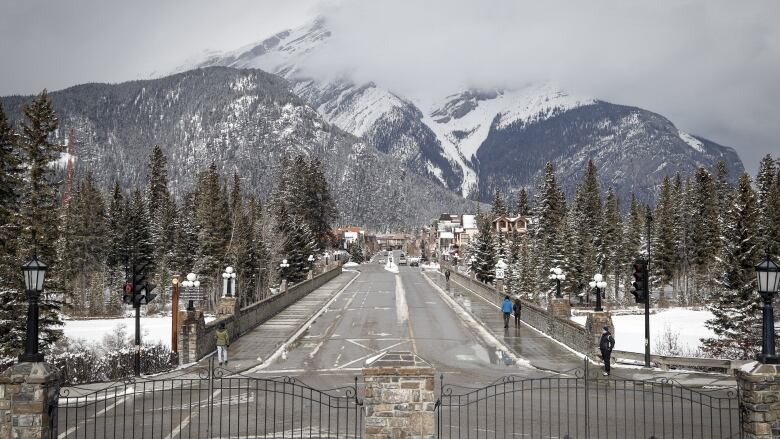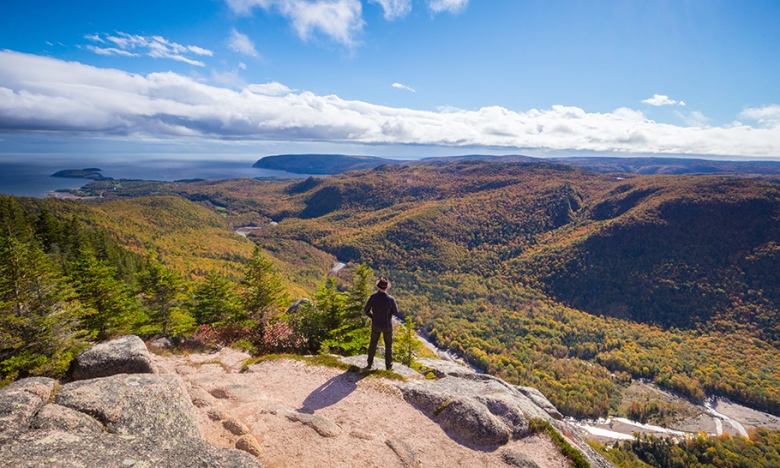29 of Canada's national parks to reopen to day-use visitors June 1
Camping won't be permitted until at least June 21

More than half of Canada's national parks including Banff inAlberta, Pacific Rim in British Columbia and Cape Breton Highlandsin Nova Scotia are to reopen June 1.
Minister of Environment Jonathan Wilkinson says 29 of the 48national parks will open for day use, and there will be access towashrooms.
"It's an opportunity for folks, particularly those who livereasonably close to national parks, to be able to get out in nature in a manner that can allow physical distancing," he told TheCanadian Press.
All national parks, historic sites and marine conservation areashave been closed for weeks to slow the spread of COVID-19.
Wilkinson said parks such as Banff, Jasper and Waterton inAlberta will open day-use areas and trails to visitors.
Making it safe
In Banff, the town and many of its businesses have been preparingto reopen on June 1.
"This has been devastating for our town that relies solely ontourism as our economy," said Mayor Karen Sorensen.
"We wanted to make sure we had protocols in place to make itsafe not only for our communitybut also for our visitors."
The town's council decided Monday to close two blocks of its often-crowded main street, Banff Avenue, to vehicle traffic to makemore room for pedestrians.
"If ... people need to line up to get into one of our businesseson Banff Avenue, there will be space," said Sorensen.
"There willbe space for some outdoor patio seating and some outdoor retailingopportunities and there will still be space for outdoor pedestrianflow."
Banff is the country's busiest national park, with about fourmillion visitors annually.
Other national parks reopening June 1 include Riding Mountain inManitoba and Grasslands in Saskatchewan.
Wilkinson said some parks, including many in Northern Canada,will remain closed to reduce travel to areas sensitive to the spreadof COVID-19.
"There's also some of the parks that are co-managed with FirstNations, like Haida Gwaii, where the First Nation has asked that thepark not be reopened," he said.
Camping, he said, will still not be allowed in national parksuntil at least June 21.
"Camping is going to be something that a lot of Canadians aregoing to look at, given that travelling outside the country is goingto be particularly challenging," said Wilkinson.
The rules
The British Columbia Parks website crashed soon after it openedsummer bookings for provincial campsites Monday, while Alberta Parkssaw nearly 40,000 campsite bookings on its first day of offeringrebookings.
Many provincial governments have reopened camping for June 1butare only allowing their own residents to reserve spots to preventnon-essential travel.
Wilkinson said Parks Canada will have protocols in place oncethey allow camping, but the agency doesn't plan to put in restrictions by province.
"We are a national agency that belongs to all people who live inthis country," he said. "We will be telling people that they needto be paying attention to the travel guidance of their respectiveprovince or territory."
Some governments have restricted travel in and out, while othershave asked people not to travel to their jurisdictions. Wilkinson said there could be restrictions on a park-by-parkbasis.

"In some cases, we'll be opening more things because we thinkit's set up in a way that can accommodate physical distancing," hesaid. "In others, where there are some ... trails that areextremely busy, we may not open those because we can't allow forsafe usage."
Other possibilities could include setting limits on how manypeople can visit at a time or closing parking lots at popular areas.
Wilkinson said he realizes Canadians have been through a lot inrecent months.
"Many have stuck very, very close to home," he said. "One ofthe key things for us is trying to give Canadians opportunities toget out, as summer comes, to enjoy nature.
"It's part of what Canada is for most Canadians."
29 parks to be accessible
Parks Canada says some operations at29 of Canada's 48national parks, national historic sites, historic waterways, and national marine conservation areas will resume starting Monday:
1. Cape Breton Highlands National Park, N.S.
2. Kejimkujik National Park and National Historic Site, N.S.
3. Prince Edward Island National Park, P.E.I.
4. Fundy National Park, N.B.
5. Kouchibouguac National Park, N.B.
6. Gros Morne National Park, N.L.
7. Terra Nova National Park, N.L.
8. La Mauricie National Park, Que.
9. Forillon National Park, Que.
10. Bruce Peninsula National Park, Ont.
11. Rouge National Urban Park, Ont.
12. Georgian Bay Islands National Park, Ont.
13. Thousand Islands National Park, Ont.
14. Pukaskwa National Park, Ont.
15. Riding Mountain National Park, Man.
16. Prince Albert National Park, Sask.
17. Grasslands National Park, Sask.
18. Banff National Park, Alta.
19. Jasper National Park, Alta.
20. Waterton Lakes National Park, Alta.
21. Elk Island National Park, Alta.
22. Yoho National Park, B.C.
23. Kootenay National Park, B.C.
24. Mount Revelstoke National Park, B.C.
25. Glacier National Park, B.C.
26. Pacific Rim National Park Reserve, B.C.
27. Gulf Islands National Park Reserve, B.C.
28. Wood Buffalo National Park, N.W.T/Alta.
29. Kluane National Park Reserve, Yukon.
SOURCE: Government of Canada, Environment and Climate Change Canada












_(720p).jpg)


 OFFICIAL HD MUSIC VIDEO.jpg)
.jpg)



























































































